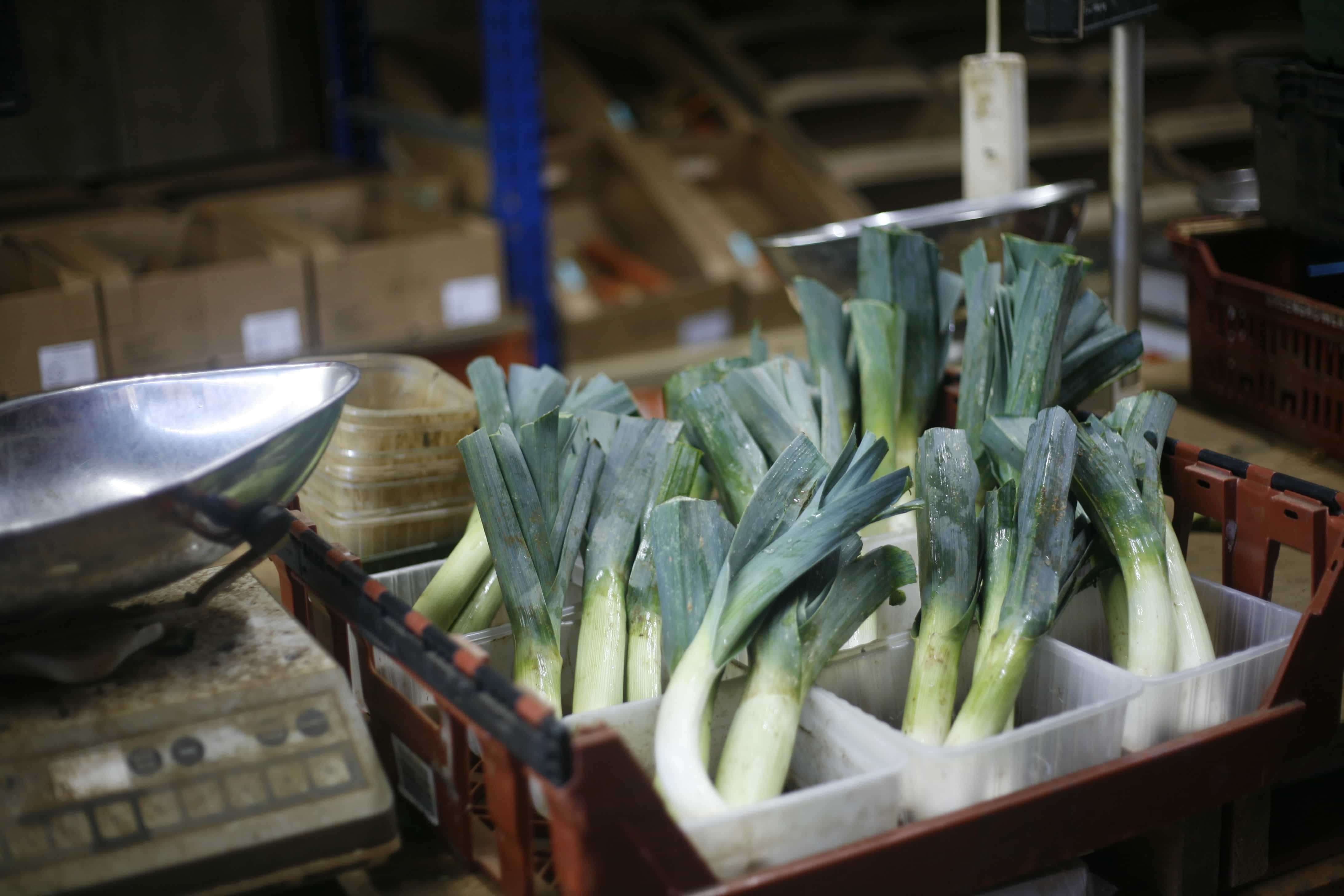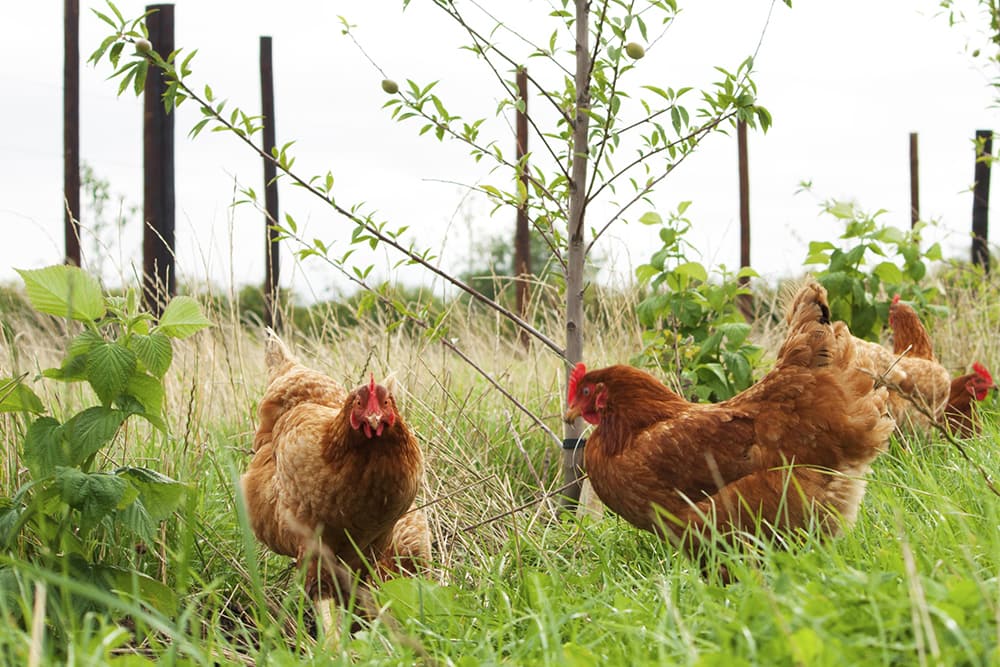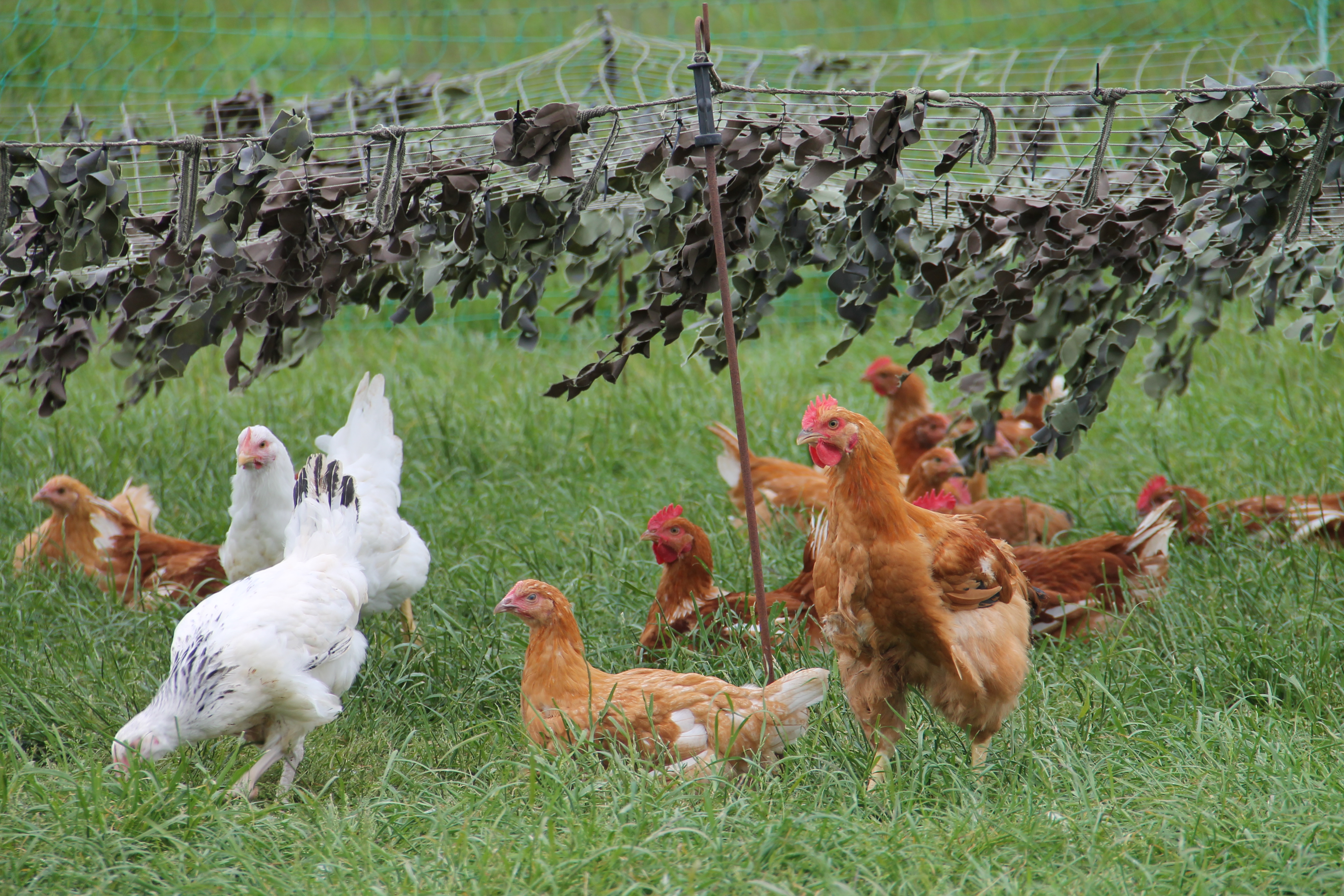
- Soil Association
- Take action
- Organic living
- What is organic?
- Organic eggs

Organic eggs
Organic vs free-range - what's the difference?
Free-range, caged, barn eggs or organic?
Egg labelling can be confusing and sometimes it’s hard to know what the difference is and which type of egg is the most ethical.
So what makes organic eggs different to free-range?
There are five key differences between organic and free-range standards. Soil Association's organic standards cover:
1. Organic chickens are kept in smaller flocks:
The maximum size for a flock of chickens under organic standards is 3,000 hens.
In comparison, RSPCA assured's free-range standards set a maximum flock size of 16,000 hens. In intensive caged systems, there is no maximum, with some flock sizes reaching 100,000 chickens!
Having fewer birds encourages more use of the birds' outdoor range. It makes it easier to take care of animals on an individual level, ensuring the birds are kept to the highest standards of welfare.

2. Truly free-range with access to the outdoors:
Organic chickens must have continuous and easy daytime access to an outdoor range covered with suitable vegetation. The only exception to this is in adverse weather conditions.
In general, a smaller proportion of birds tend to go outside when kept in larger flocks. Organic farms certified by the Soil Association have to provide more pop holes (exits from the hen house) than free-range farms do, to encourage chickens to get out onto their range as much as possible.
Range size and quality:
Soil Association organic standards also require that laying hens have access to a much larger outdoor range than EU organic standards and free-range standards.
This means, under Soil Association standards, each hen is allowed a minimum of 10 square metres of space outside, compared to 4 square meters for hens reared to EU organic and free-range standards.

Chickens get outside at a younger age:
One other way that Soil Association organic standards differ to any other type of laying hen system, is that certified farmers must give hens access to the outdoors at 12 weeks – a much younger age than free-range systems.
Hens are initially fearful of new environments, such as the outdoor range. By giving them access from an early age, farmers encourage a more free-range life for the hens.
The range itself must be rested for at least 9 months between flocks to allow vegetation to grow back and prevent the build-up of disease in the soil. In contrast, the range in free-range farms only needs to be rested for 2 months.
The outdoor range provides many behavioural opportunities for hens. It's a stimulating environment where they can explore, forage for insects, scratch around in the ground, and bathe in the sun and dustKate Still, Animal Welfare Specialist - Soil Association Certification
3. Higher standards of animal welfare:
'Beak trimming' is banned under Soil Association's organic standards. It's a mutilation that can be painful, stressful and also prevents the hens from expressing their natural behaviour by foraging.
The practise is routinely performed on laying hens in the UK (including EU organic and free-range systems) to reduce the damage bird can cause to each other through 'feather pecking'.
However, it does not prevent the underlying cause of the behavioural problem, which is often caused by overcrowding and lack of stimulation. We believe feather pecking can be solved by improving welfare standards - providing hens with stimulating environments, plenty of space, and allowing birds to satisfy their natural behavioural needs, like foraging and dust-bathing.
-
Become a member
Together we will create a create a healthier food and farming future. One where farm animals, wildlife, people and the planet can all thrive together.
Join us today
4. No routine use of antibiotics:
The routine use of antibiotics is banned by organic standards. This regular, preventative use of antibiotics in intensive farming (treating animals with antibiotics before they get sick) is increasing the risk of antibiotic resistance. This undermines our ability to help treat infection and disease.
40 percent of all antibiotics in the UK are given to farm animals, and intensively-reared pigs & poultry account for 85-95 percent of UK farm antibiotic use.
Under organic standards, antibiotics can only be used to treat animals if they do get ill. Because of the lower stocking densities and higher animal welfare, organic animals need antibiotics far less frequently than non-organic and free-range livestock.
5. Organic chickens are fed a GM-free diet:
In the UK alone, over one million tonnes of GM crops are used to feed animals. This is banned by organic standards and organic birds are not fed on GM grain or feed (which is common in free-range and non-organic hens). Outdoor foraging also means that organic chickens get to eat a variety of plants, grubs and insects which adds variety to their diet and helps keep them healthy.
Standards for Soil Association certified organic laying hens have been given the gold standard by Compassion in World Farming (CIWF) – the highest of any farming system in the UK. Next time you shop, looking for the organic logo is one easy way to can make sure you're opting for higher welfare products - helping to make a big difference for farm animals.
-
Look for the organic logo
Find out where you can buy organic food near you
Buy organic


Why organic?
The welfare potential of cage systems is really limited. Hens aren’t able to perform all of the behaviours that come naturally to them, like foraging, scratching, or dust bathing. And these birds never see natural daylight, which is heartbreaking.Kate Still Animal Welfare Specialist, Soil Association
